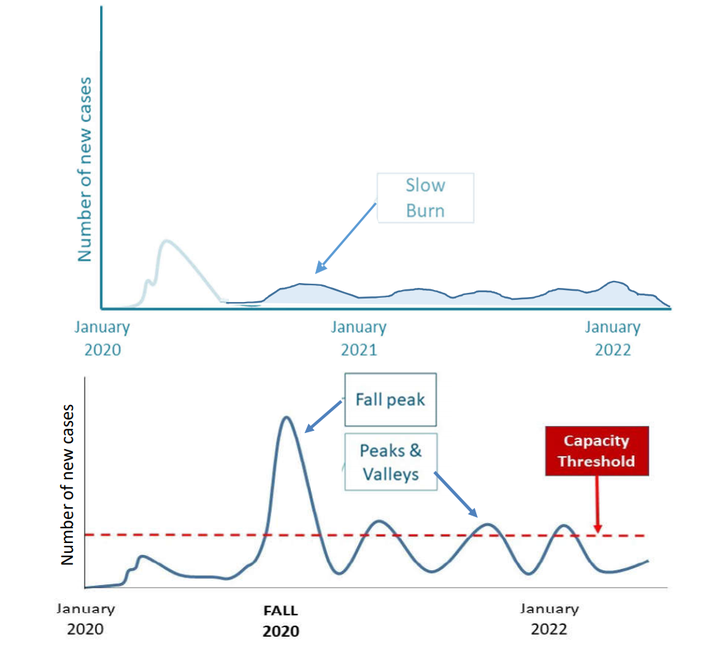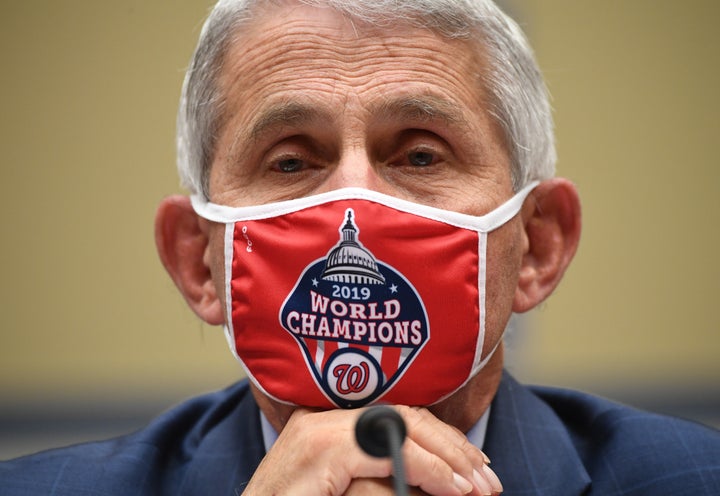OTTAWA — Outbreaks of COVID-19 are expected to continue through to January 2022, according to new epidemic modelling released Friday by federal health officials.
Chief Public Health Officer Dr. Theresa Tam told reporters in Ottawa keeping transmission rates low will be key in this “new reality of living with this virus” to keep the number of hospitalizations from overwhelming the health system this fall.
“We don’t know the seasonality of this virus. It’s continued throughout the summer, that’s for sure, but what if it demonstrates a certain type of acceleration under certain conditions?” Tam said.
A best-case scenario in modelling shows a “slow burn” chart pattern in the shape of a low ripple of COVID-19 cases well under the health system’s peak capacity.
Tam said a worst-case scenario includes a sharp spike in the fall followed by “peaks and valleys” of outbreaks through to 2022, risking overwhelming health-care systems.

“It is prudent to plan and to be prepared for a reasonable worst-case scenario,” Tam said. She added that transmission rates need to be kept low — even lower than the initial wave — for more public spaces and sectors of the economy to re-open.
At least 9,015 people have died in Canada due to COVID-19 as of Thursday, according to Deputy Public Health Officer Howard Njoo. More than 121,200 cases have been reported; among them 89 per cent have recovered.
While research continues on viable treatments for the novel coronavirus, Tam said the new epidemic modelling does not take into account the possibility of a “good vaccine” being found between now and 2022.
Procurement Minister Anita Anand announced last week that the federal government is in negotiations with U.S. pharmaceutical giant Pfizer and bio-tech firm Moderna to secure millions of doses of experimental COVID-19 vaccines if one is determined to be safe and effective.
Russian President Vladimir Putin claimed last week that Russia has found a vaccine for COVID-19, despite it not being tested in a large-scale clinical trial.
Dr. Anthony Fauci, the United States’ top infectious disease expert, cast his own uncertainty about the Russian vaccine last week, saying he “seriously” doubts “the Russians have actually, definitively proven that the vaccine is safe and effective.”

A recent editorial published in the Canadian Medical Association Journal (CMAJ) was frank in stating while eliminating the new coronavirus “may not be achievable in the Canadian context, it is a worthwhile goal.”
With Canada’s “high global connectivity” comes the risk of the virus being introduced and re-introduced in regions and populations, editorial writers said.
CMAJ warns dropping infection rates come with the risk of “pandemic fatigue” — an issue that may erode people’s sense of urgency about maintaining physical-distancing measures to prevent new transmissions.
“In the absence of a vaccine or other therapeutic breakthrough, a long road lies ahead.”

Asked by a reporter what society will look like in 2022 under potential extended physical-distancing measures, Tam said that kind of guessing game is “extremely unwise.”
Discussions about a vaccine will give rise to a new crop of issues for public health officials, she said, including dealing with availability and its efficacy in different population groups.
“And then do you need booster doses? How long does immunity last? Those remain questions we can’t answer right now.”
The infectious disease expert said Canadian public health officials are currently in a stage of “over-planning” to keep a possible spike in new COVID-19 cases from overwhelming health-care systems during the flu season.
Canada is “much better prepared than we were before,” Tam said.